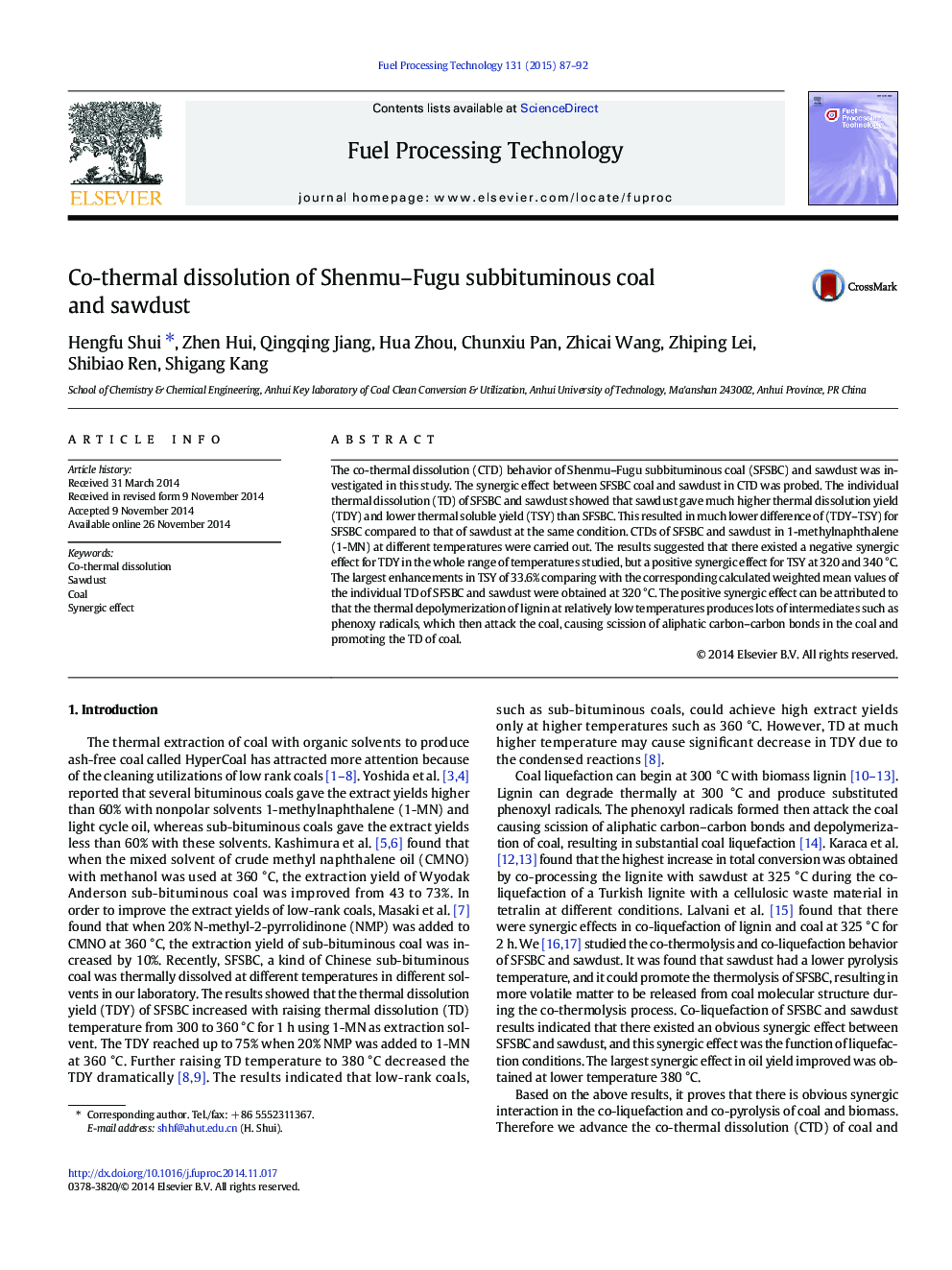| Article ID | Journal | Published Year | Pages | File Type |
|---|---|---|---|---|
| 209343 | Fuel Processing Technology | 2015 | 6 Pages |
•Sawdust gave much higher thermal dissolution yield than SFSBC.•SFSBC gave much higher thermally soluble yield than sawdust.•Thermal dissolution yields in CTD are lower than those of calculated values.•The largest positive synergic effect on the TD of SFSBC obtained at 320 °C.•The radicals formed from lignin at low temperatures promote the TD of SFSBC.
The co-thermal dissolution (CTD) behavior of Shenmu–Fugu subbituminous coal (SFSBC) and sawdust was investigated in this study. The synergic effect between SFSBC coal and sawdust in CTD was probed. The individual thermal dissolution (TD) of SFSBC and sawdust showed that sawdust gave much higher thermal dissolution yield (TDY) and lower thermal soluble yield (TSY) than SFSBC. This resulted in much lower difference of (TDY–TSY) for SFSBC compared to that of sawdust at the same condition. CTDs of SFSBC and sawdust in 1-methylnaphthalene (1-MN) at different temperatures were carried out. The results suggested that there existed a negative synergic effect for TDY in the whole range of temperatures studied, but a positive synergic effect for TSY at 320 and 340 °C. The largest enhancements in TSY of 33.6% comparing with the corresponding calculated weighted mean values of the individual TD of SFSBC and sawdust were obtained at 320 °C. The positive synergic effect can be attributed to that the thermal depolymerization of lignin at relatively low temperatures produces lots of intermediates such as phenoxy radicals, which then attack the coal, causing scission of aliphatic carbon–carbon bonds in the coal and promoting the TD of coal.
